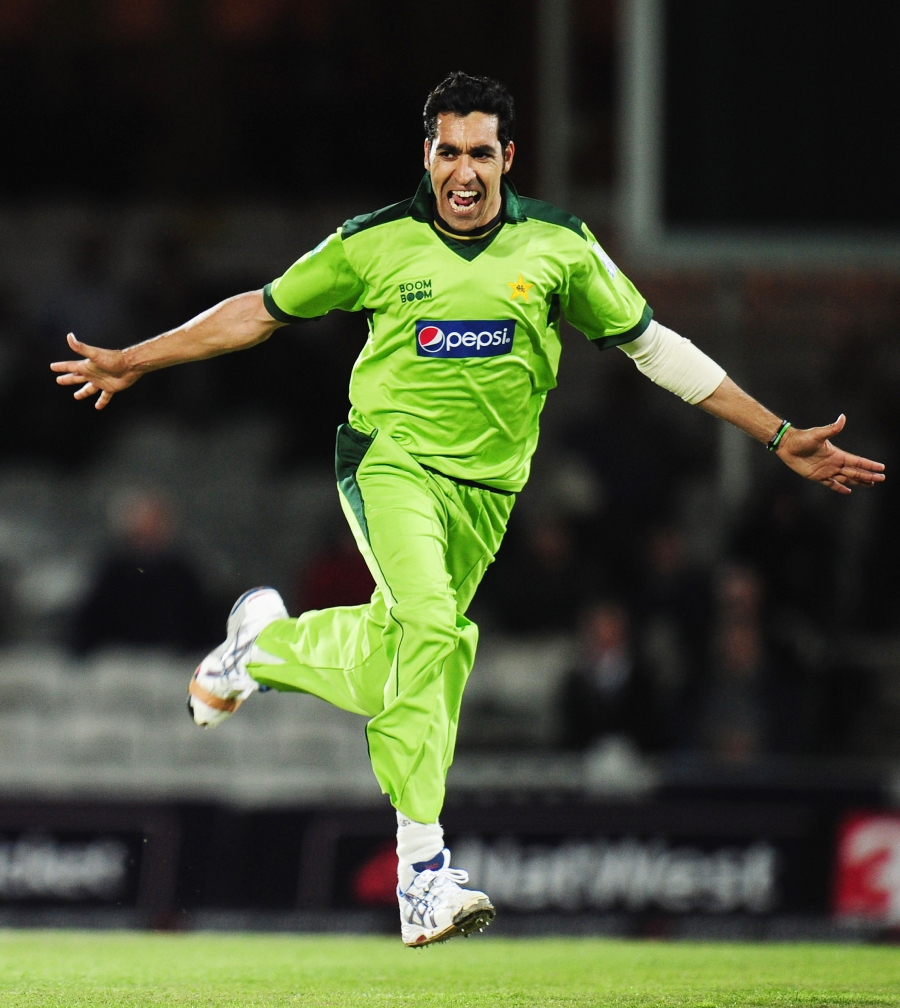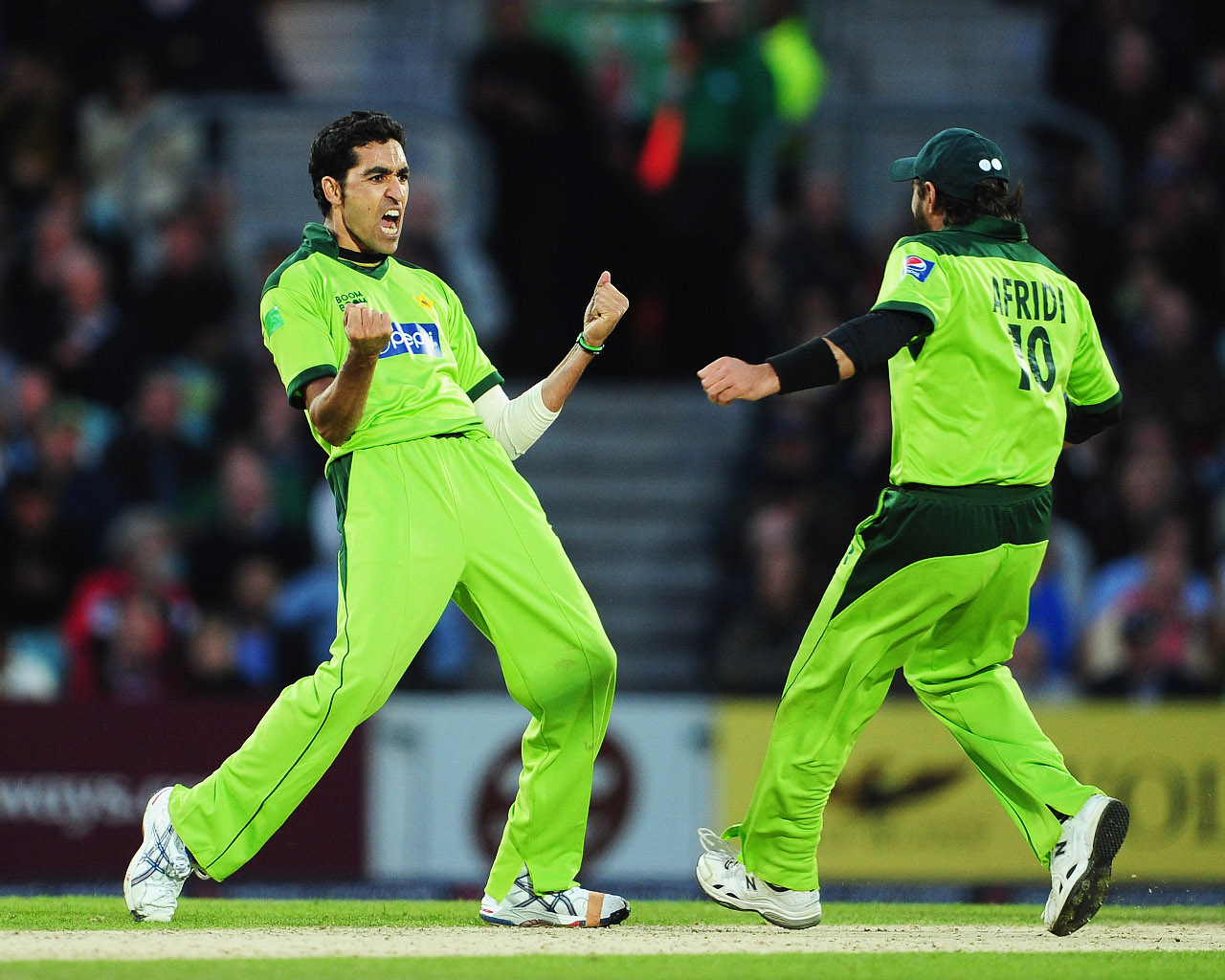Umar Gull biography
Source Link (Google.com)
Umar Gul, Cricketers is famous for Cricket, Pakistani celebrity. Born on 14 April, 1984.
He slightest-overvalued but the largest part flourishing and guaranteed Pakistan velocity creation of the preceding only some years, Umar Gul is the most recent in Pakistan’s congregation-line of swiftness-bowling aptitude. He had played just nine first-class matches at what time called up for national duty in the rouse of Pakistan’s deprived 2003 World Cup. On the smooth tracks of Sharjah, Gul performed commendably, maintaining tremendous regulation and being paid appreciable out swing with the new ball.
He is not articulate although bowls an extremely swift profound ball and his outstanding have power over and capability to take out line of stitching movement symbols him out. Auxiliary, his height enables him to haul out bounce on the majority outsides and from his natural back of a length, it is a constructive attribute. His first immense moment in his profession came in the Lahore Test in opposition to India in 2003-04. Unfazed by a intimidating batting line-up, Gul slashed all the way through the Indian top order, affecting the ball both ways off the ridge at a jagged velocity. His 5 for 31 in the first innings gave Pakistan near the beginning proposal which they troop home to win the Test.
Unluckily, that was his final cricket of any kind for over a year as he exposed three pressure fractures in his back right away later than the Test. The wound would have wrecked several an international professions, although Gul came back, fitter and sharper than previous to in late 2005. He came back in a Pakistan shirt in opposition to India in the ODI series at home in February 2006 and in Sri Lanka given an idea about further signs of treatment by permanent both Tests but it was in actuality the second half of 2006, where he completely came of era. Leading the harass in opposition to England and then the West Indies as Pakistan’s main bowlers endured injuries, Gul stood tall, finishing Pakistan’s best bowler.
Since after that, as Mohammad Asif and Shoaib Akhtar have struggled, Gul has turn out to be Pakistan’s forefront and one of the most excellent swift bowlers in the world. He is smart sufficient and good adequate to achieve something in all three set-ups and 2009 proved it: he put collectively a scrap of wicket-taking in ODIs, on departed pitches in Tests (together with a profession-best six-wicket haul in opposition to Sri Lanka) and recognized himself as the world’s most excellent Twenty20 bowler, coming on later than the early overs and firing in Yorkers on demand.
He had oblique at that by being most important wicket-taker in the 2007 World Twenty20; over the after that two years he overwhelmed wherever he went, in the IPL for the Kolkatta Knight Riders and in Australia’s domestic Twenty20 tournament. Corroboration came on the grandest phase: having poleaxes Australia in a T20I in Dubai with 4-8, he was the best bowler and leading wicket-taker as Pakistan won the second World Twenty20 in England. The best part was 5-6 in opposition to New Zealand, the uppermost quality demonstration of Yorker bowling. He is not a one-format pony, on the other hand, and will hang about a vital component in Pakistan’s attack across all formats.
One Day Internationals
Gul appeared in all three of Pakistan's group matches in the 2007 World Cup taking four wickets with an economy rate of 3.13, only Shane Bond of those to deliver 100 balls was more economical. He also appeared in all of Pakistan's matches at the 2007 ICC World Twenty20 taking 3/15 of 4 overs in the semi-final victory over New Zealand. He took three wickets in the final to finish as the tournament's leading wicket-taker.
Twenty20
With injuries limiting Gul's test cricket participation, he made a distinct change to his bowling set-up, making a focus on bowling in the late overs of T20. He got his opportunity with the absence of Shoaib Akhtar and Abdul Razzaq in the 2007 ICC World Twenty20 held in South Africa. He bowled from the 13th over onwards and finished the tournament with 13 wickets, becoming the leading wicket taker ahead of Shahid Afridi and RP Singh.
In the 2009 ICC World Twenty20, he performed well, earning the mantle from at least one pundit of "the outstanding seam bowler of the World Twenty20".
His five-wicket haul for just six runs, when Pakistan defeated New Zealand, won especial acclaim. The spell made him the first bowler in history to take a five wickets in a Twenty20 international, and he held the record of best T20 bowling figure until 8 August 2011, when surpassed by Ajantha Mendis (6/16). Mutterings were made about a possible correlation between ball tampering and the exorbitant amounts of reverse-swing he was able to extract, but he denied them categorically: "whenever an Asian bowler performs and uses the reverse-swing, the Western cricketing countries raise the issue of ball-tampering against them."
He was also part of the Pakistan team that lifted the trophy at Lord's while also finishing as the leading wicket taker of the tournament for the second consecutive time.
He gained a lot of wickets bowled, in particular with late reverse swinging yorkers, which dip late to slide under the bat and leave little room for batsmen to maneuver the ball. Consequently he has also an excellent economy rate in this format of the game.
In February 2008, Gul signed with the Indian Premier League and was drafted by Shahrukh Khan's Kolkata Knight Riders franchise for US $150,000. He played in six matches, taking 12 wickets at an average of 15.33, including a player of the match award in Kolkata's final game in which Gul took 4–23 and scored 24 runs from 11 balls.
In December 2008, Gul signed with the Western Warriors to compete in the Australian domestic 2008-09 KFC Twenty20 Big Bash tournament. He performed very well in his debut match for the Warriors, taking 4 wickets for 15 runs in a losing side. He was among the most successful bowlers in the competition. Despite not being available for the entire tournament, he finished second top wicket-taker with 12 wickets.
Internationally, Gul has taken 47 wickets in 32 games at an average of 14.65. He is the second leading wicket-taker in Twenty20 Internationals behind teammate Shahid Afridi.
Test matches
He was recalled and played two Tests after that taking four wickets in a drawn Test against New Zealand before coming in as replacement for Shabbir Ahmed in the second Test of the three-Test series against India. After coming on as first-change bowler, Gul dismissed Virender Sehwag in his second over, and then bowled unchanged for 12 overs either side of lunch to take five Indian top order wickets – including Rahul Dravid and Sachin Tendulkar, who both had Test batting averages above 50, as did Sehwag. Gul finished with five for 31 in his spell, earning him commendation from Cricinfo journalist Dileep Premachandran, who praised his "control of line and length", and he was also named Man of the Match despite conceding runs at five an over in the second innings in a nine-wicket win.
After a length injury lay-off, which kept him out of international cricket for nearly two years, Gul returned to the Pakistan fold in 2006. Firstly with quiet away series against Sri Lanka then followed by a tour to England in 2006. Gul was quickly made the lead bowler in the side due to the injuries to other front line bowlers. Gul to 18 wickets in four tests, justifying the selectors faith in him.
Later in 2006, against West Indies at home, Gul had perhaps his most successful test series. He took 16 wickets in 3 tests, including notable spells of reverse swing bowling. He was responsible for breaking Ramnaresh Sarwan's toe with a dipping yorker.
Test appearances however remained few and far between due to injuries and lack of test cricket for Pakistan.
In February 2009, Gul recorded his best test figures in the Pakistan team, taking 6 for 135 on a flat pitch.
In July 2010, Pakistan faced England at Trent Bridge and were 147/9 in their first innings. Gul scored 30* before the day was called off due to bad light. He returned the next day with Mohammad Asif and batted with intent to add another 35 runs in five overs. This saw Pakistan avoid the follow-on against England and therefore survive an innings defeat.
Gul then suffered a hamstring injury in the second test when he was touring England in 2010 he was ruled out for three weeks that meant he would miss the remaining two tests. However Gul managed to recover and became fit enough to play in the fourth test. However they decided to rest Gul for the final test match despite the fact that he had recovered quicker than expected.
His next chance to play test cricket came against South Africa in November 2010 when he took 3 wickets in a first innings and triggered a South African collapse of 380 on a flat wicket. He took the crucial wicket with an excellent inswinger against AB de Villiers.
Batting-skills
Despite being a bowler Gul can perform well as a lower order batsman and has proved his ability as a quick.run-picker His finest moment with the bat came in a test match against England in August 2010 when Pakistan were at 103/7 and Gul came into bat at 8. He scored 29 off 30 deliveries, and when play ended that day, two more wickets had fallen and the team were at 148/9. Pakistan needed 11 more runs to avoid the follow-on, and Gul then came in with his number 10 partner Mohammad Asif. Gul scored 34 runs in just 11 deliveries however his partner Mohammad Asif was run out at the other end and Gul ended on 65 not out.
Umar Gull
Umar Gull
Umar Gull
Umar Gull
Umar Gull
Umar Gull
Umar Gull
Umar Gull
Umar Gull
Umar Gull
Umar Gull










No comments:
Post a Comment